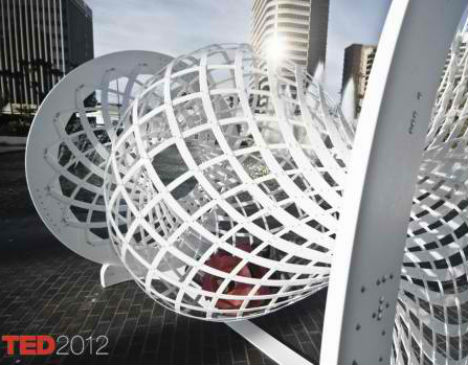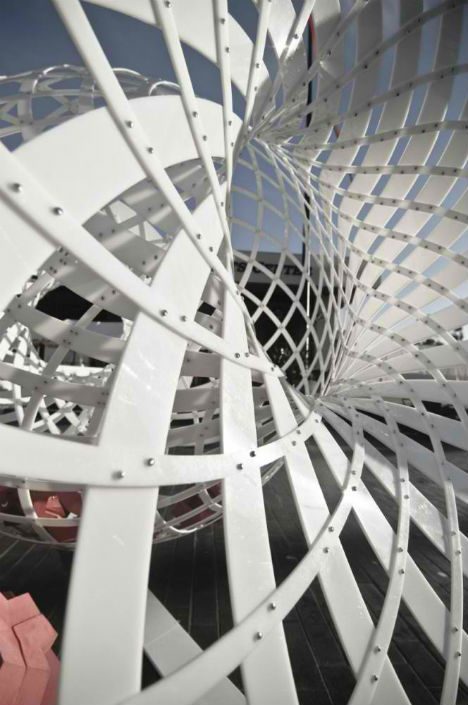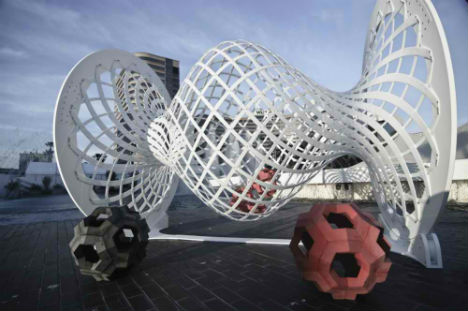This is architectural biomimicry on a whole new level: taking inspiration not from large organisms like trees or animals, but from the molecular structure of a virus module. Designed and installed at the 2012 TED Conference by Skylar Tibbits and Arthur Olson, The Self-Assembly Line consists of a set of these modules inside a larger structure that forces them together through stochastic rotation.
Together, the geometry of each unit as well as magnets affixed to strategic places ensure that the units fit together into a viral structure. Over time, as the units continue to come together, they form furniture-scale configurations. The design is a small-scale version of the architects’ vision for self-assembling large-scale structures.
“Self-Assembly as a method of construction relies on discrete and programmable components, simple construction/design sequences, energy input and structural redundancy – fundamental elements that are demonstrated in the installation,” say the architects at ArchDaily. “This installation demonstrates the intersection of macro and micro worlds as well as translation from molecular and synthetic phenomena to large-scale physical implementation. We aim to fuse the worlds of design, computation and biology through a process of scaling up.”
“While implementing the known structure of molecular systems, this installation also proposes the implementation of design/engineering to natural phenomena as a hybrid system. Part scientific research, part design speculation – we are neither restricted to the exact specifications of the biological realm, nor the limitlessness of the design world.”



